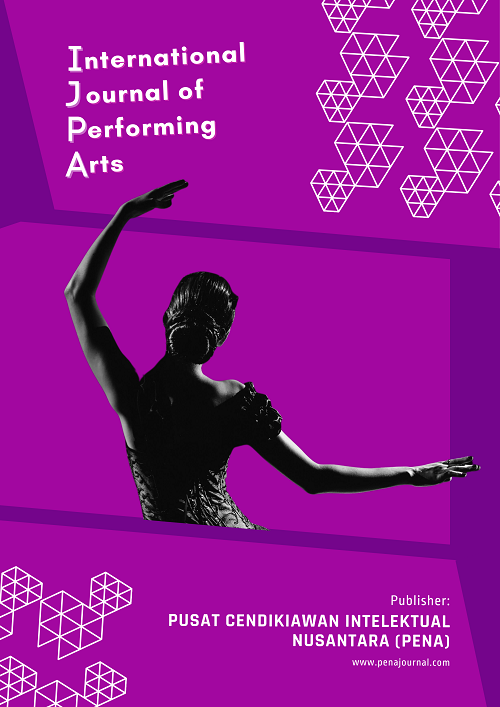CULTURAL APPROACH THROUGH TRADITIONAL DANCE IN INDONESIAN LANGUAGE LEARNING FOR FOREIGN SPEAKERS: PEDAGOGICAL INNOVATION IN THE GLOBAL BIPA PROGRAM
CULTURAL APPROACH THROUGH TRADITIONAL DANCE IN INDONESIAN LANGUAGE LEARNING FOR FOREIGN SPEAKERS: PEDAGOGICAL INNOVATION IN THE GLOBAL BIPA PROGRAM
DOI:
https://doi.org/10.56107/ijpa.v4i1.246Abstract
This study aims to explore the effectiveness of cultural approaches through the integration of
traditional dance in the teaching of Indonesian as a Foreign Language (BIPA) at Hebei Foreign
Studies University (HISU), China. The primary focus is on the use of Jathilan (a traditional Javanese
dance) and Betawi dance as instructional media to foster cultural awareness and enhance language
skills among international learners. This qualitative case study involved data collection through
direct observation of both online and offline learning sessions, as well as in-depth interviews with
BIPA instructors and participants actively involved in the dance-based learning process. The
findings indicate that the incorporation of traditional dance significantly boosts learners’
motivation, deepens their understanding of Indonesian culture, and creates an inclusive and
participatory classroom environment. Active involvement in dance practice also strengthens
students’ emotional and cognitive engagement in language learning. A key element in the success of
this program is the collaboration between Universitas Negeri Jakarta (UNJ) and HISU through an
international community service initiative. The study concludes that performing arts-based cultural
approaches offer an innovative pedagogical strategy for BIPA instruction and serve as an effective
tool for Indonesia’s cultural diplomacy on the global stage.
References
Anderson, B. (2006). Imagined Communities: Reflections on the Origin and Spread of
Nationalism (Revised Ed.). Verso.
Braun, V., & Clarke, V. (2006). Using thematic analysis in psychology. Qualitative Research in
Psychology, 3(2), 77–101.
Chaer, A., & Agustina, L. (2010). Sosiolinguistik: Perkenalan awal. Rineka Cipta.
Creswell, J. W. (2013). Qualitative Inquiry and Research Design: Choosing Among Five Approaches
(3rd ed.). SAGE Publications.
Dewey, J. (1938). Experience and education. Macmillan.
Kramsch, C. (1993). Context and Culture in Language Teaching. Oxford University Press.
Lestari, Y. D., & Wahyuni, S. (2019). Integrasi budaya dalam pengajaran BIPA: Studi
kasus pengajaran budaya di Thailand. Jurnal Pendidikan Bahasa dan Sastra, 19(1),
–55.
Mulyani, S., & Widodo, H. P. (2021). Teaching Indonesian as a Foreign Language (BIPA): Cultural
integration through performing arts. Language and Intercultural Communication, 21(2),
–195.
Nugroho, A. (2020). Pembelajaran interkultural dalam program BIPA melalui kegiatan
kesenian. Jurnal Bahasa dan Sastra, 15(2), 110–123.
Permendikbud No. 27 Tahun 2017 tentang Layanan Bahasa Indonesia bagi Penutur Asing
(BIPA).
Stake, R. E. (1995). The Art of Case Study Research. SAGE Publications.
Sulistyowati, R. (2018). Tari tradisional sebagai media diplomasi budaya Indonesia. Jurnal
Ilmu Sosial dan Ilmu Politik, 22(1), 1–12.
UNESCO. (2003). Convention for the Safeguarding of the Intangible Cultural Heritage.
Yuliana, S. (2022). Blended learning dalam pembelajaran BIPA: Strategi integratif era digital. Jurnal
Pendidikan Bahasa Indonesia, 9(1), 56–68.





















